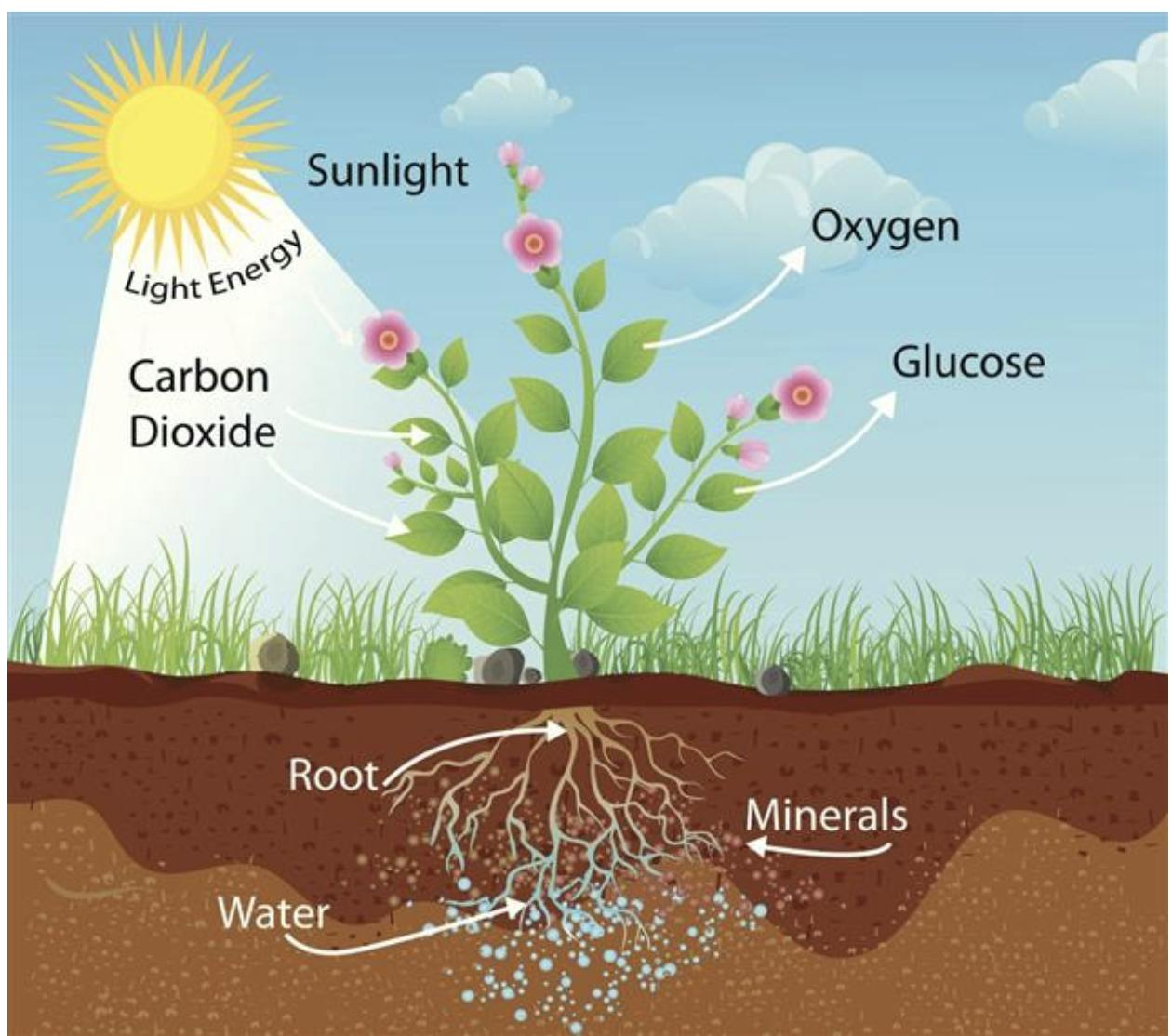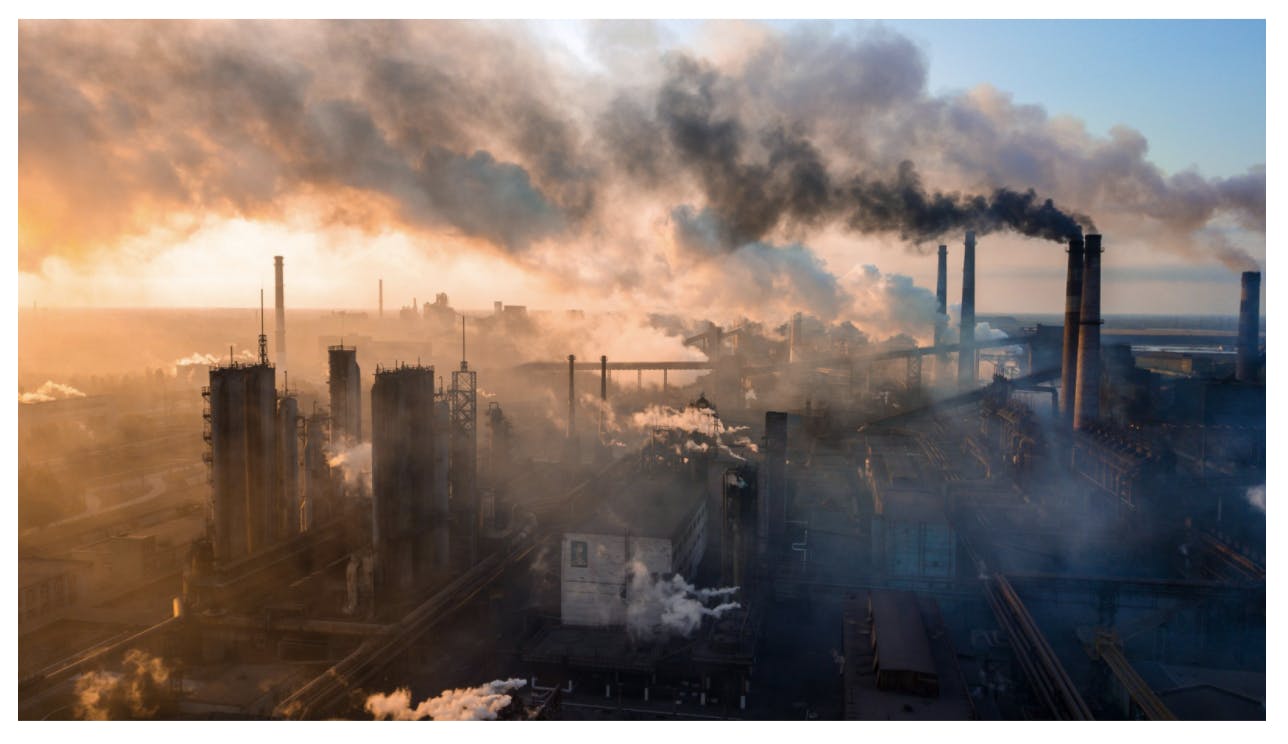TL;DR Science: Carbon Cycle
By Angelo Chen
October 20, 2021 · 3 minute read
Chemistry
Earth Science
Environmental Science
Carbon is an element, fourth most abundant in the universe, but also composes more compounds than any of the other elements combined. Carbon moves throughout the earth is two main cycles, the fast and the slow cycle. As their names imply, the former occurs quickly, in the span of roughly one lifetime, and the latter occurs over the course of millions of years.
The Fast Cycle
The fast cycle is primarily composed of the biosphere, or living things in general. It begins with photosynthesis, a process in which plants and algae take in light, CO2, and H2O to form sugars and oxygen. Without carbon, we wouldn’t have CO2, and plants wouldn’t produce the oxygen we need to breathe.

From here, plants can transfer their carbon to animals when they are eaten, and it makes its way through the food chain as animals prey upon each other. You engage in this part of the carbon cycle everyday, because all the food you eat has carbon in it.
In all living things, carbon continues to be cycled through respiration. This is a process in which an organism takes in O2 and releases CO2 back into the atmosphere. You are familiar with this process, as you breathe in oxygen and exhale carbon dioxide. With CO2 having been released back into the atmosphere, it can be reused in photosynthesis and the carbon cycle begins again.
Not all carbon is released back into the atmosphere via respiration. It is also recycled back into the atmosphere via decomposition. After a plant or animal dies, bacteria break down the carbon inside the organism and form carbon dioxide, which is subsequently sent back into the atmosphere, to be used in photosynthesis.
However, photosynthesis isn’t the only way the carbon cycle can start. Enter, the slow cycle.
The Slow Cycle
The slow cycle is a pathway for carbon that takes thousands to millions of years to complete. It involves rocks, oceans, and the atmosphere.

The slow cycle begins with carbon dioxide in the atmosphere combining with water vapor, forming acid rain when it eventually precipitates. This acidic rain wears away at mountains, eroding the rocks and releasing the carbon fixed into them. This carbon is dissolved into the rainwater, which flows down rivers into oceans. The carbon is then evaporated back into the atmosphere with water, or it solidifies and falls to the ocean floor, forming the Earth’s crust.
Another part of the carbon cycle involves fossil fuels. When the carbon of dead organisms fails to be recycled into carbon dioxide, due to the lack of bacteria or oxygen needed to properly decompose substances, the carbon dioxide gets locked into into the Earth. With heat, time, and pressure, this carbon forms fossil fuels, such as petroleum (crude oil) and coal.
These fossil fuels remain locked in the Earth until tectonic plates collide form volcanoes. When volcanoes erupt, they release immense amounts of carbon dioxide from the fossil fuels buried deep within them. This was one of the only ways fossil fuels could be recycled into the atmosphere, and since volcanic eruptions are rare, the slow cycle would typically take millions of years to complete one cycle.

However, the presence of humans has rapidly accelerated the conversion of fossil fuels back into the atmosphere, as people mine and burn coal and oil for energy. This abnormally fast release of carbon partly contributes to the ongoing increase of carbon dioxide in the atmosphere, resulting in global warming.
For more information check out the Science Learning Hub’s interactive diagram of the carbon cycle here.
Carbon cycle — Science Learning Hub
TL;DR:
The carbon cycle consists of two main processes: the fast and slow cycles. In the fast cycle, carbon dioxide is absorbed into plants through photosynthesis, transferred into animals via consumption, and then goes back into the atmosphere by respiration and decomposition. In the slow cycle, carbon dioxide binds with rain to weather away at rock. This releases fixed carbon which gets evaporated back into the atmosphere. Dead organisms can also create fossil fuels, which are released in volcanoes or in the burning of fossil fuels for energy.
Sources
https://oceanservice.noaa.gov/facts/carbon-cycle.html
https://earthobservatory.nasa.gov/features/CarbonCycle
https://www.noaa.gov/education/resource-collections/climate/carbon-cycle
https://en.wikipedia.org/wiki/Carbon_cycle
https://www.worldatlas.com/articles/what-is-the-carbon-cycle.html
https://en.wikipedia.org/wiki/Carbon
Images
https://www.worldatlas.com/r/w960-q80/upload/b6/4c/d1/carbon-cycle.png
https://pixfeeds.com/images/26/556758/640-450233561-photosynthesis-process.jpg
https://www.worldatlas.com/r/w960-q80/upload/c3/d9/f8/acid-rain-vectormine.jpg
https://149366112.v2.pressablecdn.com/wp-content/uploads/2021/04/shutterstock_1721153281-scaled.jpg
Did you enjoy this article?
About The Author
Angelo is currently a junior at Suncoast Community High School. He enjoys spending time with his dog, and playing volleyball and violin as hobbies. He also enjoys doing math, in and out of school. If you have any questions about this article, feel free to contact him at angelo@sciteens.org.